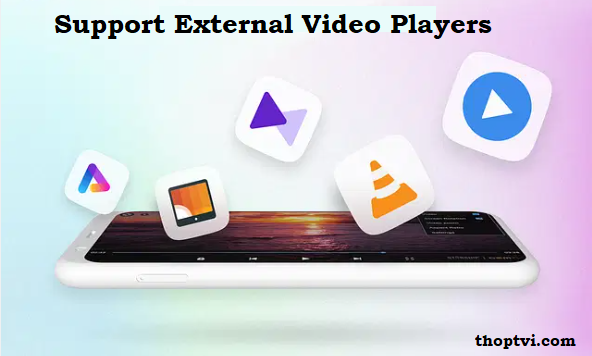Introduction
In the world of digital content consumption, the flexibility and versatility of media players have become paramount. Many streaming platforms, video apps, and websites offer support for external video players. This feature allows users to choose their preferred media player for viewing content, unlocking a host of benefits and customization options. In this article, we will explore the significance of supporting external video players and the advantages it brings to the table.
- Diverse Player Options
One of the most significant advantages of supporting external video players is the ability to choose from a wide range of players available on the market. Whether you prefer VLC, MX Player, Kodi, or any other media player, having the option to select your favorite player enhances your viewing experience. Each player comes with its unique features, codecs, and customization options, allowing users to tailor their media consumption to their liking.
- Improved Playback Performance
External video players often offer better playback performance compared to built-in players. These players are optimized for various devices, screen sizes, and resolutions, ensuring a smoother and more enjoyable viewing experience. Additionally, they can handle a wider variety of video and audio codecs, reducing the chances of encountering playback issues or format incompatibilities.
- Customization and Control
External video players grant users greater control and customization options. From adjusting audio and video settings to applying subtitles and choosing playback speed, these players empower users to personalize their viewing experience. Advanced features like audio equalization, gesture controls, and playlist management enhance convenience and enjoyment.
- Enhanced Subtitle Support
For viewers who rely on subtitles for foreign-language content or accessibility reasons, external video players often offer superior subtitle support. They allow users to customize the appearance, timing, and language of subtitles, ensuring a seamless and immersive viewing experience.
- Network Streaming and Local Playback
Support for external video players extends beyond locally stored files. Many players offer robust network streaming capabilities, allowing users to access content from various sources, including online streams, network-attached storage (NAS) devices, and cloud services. This versatility makes it easier to access and enjoy content from multiple platforms in one place.
- Cross-Platform Compatibility
Another significant advantage of supporting external video players is cross-platform compatibility. Many popular media players are available on a wide range of devices, including Android, iOS, Windows, macOS, and more. This means that users can enjoy a consistent and familiar media playback experience across their devices, regardless of the operating system.
- Adaptive Streaming and Advanced Features
Some external video players support adaptive streaming, which adjusts the quality of the video in real-time based on the viewer’s internet connection. This ensures smooth playback, even on slower connections. Additionally, some players offer advanced features like screen mirroring, casting to smart TVs, and integration with media center software.
Conclusion
In a world where digital media consumption is a daily part of our lives, the support for external video players offers a wealth of benefits. It empowers users with choices, allowing them to select the player that best suits their preferences and needs. Whether it’s for improved performance, customization options, or enhanced subtitle support, external video player support enhances the overall viewing experience. It’s a testament to the ever-evolving landscape of digital entertainment and the importance of putting control and customization in the hands of the viewer.

